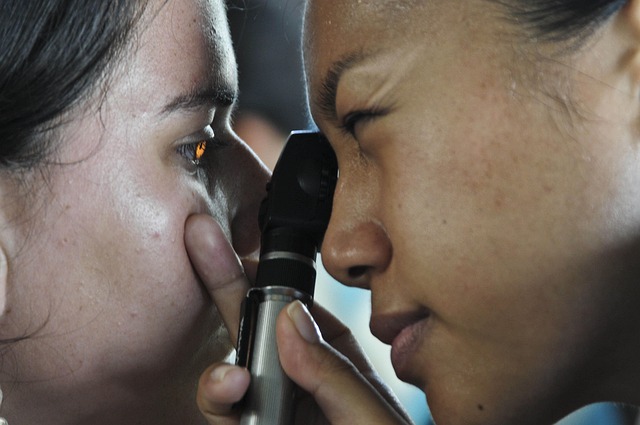Medication, optics, and procedures: options for improving sight
Blurred vision can result from many causes, ranging from refractive errors like myopia and hyperopia to dry eye, infections, or systemic conditions. This article summarizes common treatment pathways—medications, optical corrections, and surgical procedures—so readers can understand typical options for restoring clarity and guiding conversations with eyecare professionals.

Blurred vision is a common concern that affects daily activities and quality of life. Causes vary from simple refractive issues to inflammatory or systemic conditions; an accurate diagnosis is the first step toward clearer vision. This article outlines how medication, optics, and procedures are used in eyecare and what patients can expect during screening and follow-up with optometry or ophthalmology services.
This article is for informational purposes only and should not be considered medical advice. Please consult a qualified healthcare professional for personalized guidance and treatment.
What causes blurred vision and how is diagnosis done?
Blurred vision arises from problems that interfere with how light is focused on the retina or how the eye’s surface and internal structures function. Common causes include refractive errors such as myopia and hyperopia, presbyopia, dryeye disease, cataracts, retinal conditions, and neurological issues. Diagnosis begins with a comprehensive eyecare evaluation or screening that includes visual acuity testing, refraction, slit-lamp exam, intraocular pressure measurement, and, when indicated, retinal imaging or visual field testing. Telemedicine can sometimes be used for initial symptom review and scheduling, but in-person tests remain essential for definitive diagnosis and tailored treatment plans.
How can medication help improve clarity?
Medications can address underlying conditions that cause blurred vision rather than simply correcting focus. For example, topical lubricating drops, anti-inflammatory eye drops, or prescription treatments for dryeye can improve tear film stability and restore clarity. Antibiotic or antiviral eye drops treat infectious causes, and steroidal or immunomodulatory medications may be used for inflammatory eye disease under ophthalmology supervision. In some systemic conditions—like diabetes—managing blood sugar and using specific ocular injections can reduce edema and improve vision. Medication choices follow diagnosis and are balanced against potential side effects and the need for monitoring.
What optical options support better vision?
Optical strategies are the most immediate way to correct refractive blur. Glasses and contact lenses reshape or redirect light to the retina to correct myopia, hyperopia, astigmatism, and presbyopia. Specialty lenses—such as toric contacts for astigmatism or multifocal lenses for presbyopia—offer tailored solutions. Optometry clinics perform precise refractions and fit contacts while providing ongoing eyecare follow-up. For patients with ocular surface disease, certain lens materials and care routines can reduce irritation and improve comfort and clarity. Regular screening helps ensure prescriptions remain current and appropriate for changing vision needs.
Which procedures address refractive errors and eye disease?
Procedures range from minimally invasive outpatient treatments to more complex surgeries. Laser refractive procedures like LASIK and PRK reshape the cornea to correct refractive errors, potentially reducing dependence on glasses or contacts; candidacy depends on corneal thickness, stability of refraction, and ocular health. Cataract surgery replaces the clouded lens and often improves clarity significantly; modern intraocular lenses can correct some refractive errors during the same procedure. Other interventions—such as minimally invasive glaucoma surgery or retinal procedures—are used to treat disease processes that impair vision rather than simple refractive blur. Decisions about procedures require consultation with an ophthalmologist and evaluation of risks, benefits, and alternative options.
How are dryeye and related conditions treated?
Dryeye is a frequent contributor to fluctuating or blurred vision. Management begins with tear supplementation using preservative-free lubricants and environmental adjustments like humidifiers or screen-time breaks. Meibomian gland dysfunction, a common cause of evaporative dryeye, may be treated with lid hygiene, thermal therapies, or in-office gland expression. Prescription topical agents (e.g., anti-inflammatories or secretagogues) can reduce chronic inflammation. For persistent cases, procedural options—such as punctal plugs to reduce tear drainage—may be considered. Regular follow-up with an eyecare professional ensures treatments are adjusted based on symptoms and objective findings.
What role do screening and telemedicine play in care?
Screening is essential to detect causes of blurred vision early and monitor progression of conditions like myopia or diabetic retinopathy. Community screening initiatives and routine optometry visits provide baseline refractive and ocular health data. Telemedicine has an expanding role in triage, symptom review, and follow-up consultations, especially for remote or mobility-limited patients; however, many diagnostic tests and procedures still require in-person visits. Collaboration between optometry and ophthalmology helps ensure patients receive appropriate conservative care, medical therapy, or procedural referral when needed. Timely screening and coordinated eyecare optimize outcomes and preserve clarity over time.
Conclusion
Improving sight often involves a combination of accurate diagnosis, targeted medication, optical correction, and, when appropriate, surgical procedures. Each person’s pathway depends on the underlying cause—refractive conditions like myopia and hyperopia typically respond to glasses, contacts, or refractive surgery, while inflammatory or disease-related blur may require medical therapy or specialized procedures. Regular screening with qualified optometry or ophthalmology professionals and clear communication about symptoms help guide individualized care decisions and support long-term visual health.






